The 10 Best Rainforests in the World to Explore in 2025: An Adventurer’s Bucket List
- April 3, 2024
- 0 comment
Explore the best rainforests of 2025! Dive into our guide on the top 10 must-visit wild, biodiverse sanctuaries around the globe for adventurers. In 2025, adventure awaits in the world’s most stunning rainforests. Our guide to the top 10 destinations caters to those eager to explore the planet’s most diverse and untouched places. From the dense canopy of the Amazon to the ancient jungles of Southeast Asia, they’re gateways to experiencing the planet’s extraordinary biodiversity. Every destination on this list presents its own unique attractions, from breathtaking vistas to rare wildlife encounters, offering both eco-tourists and adventurers extraordinary experiences.
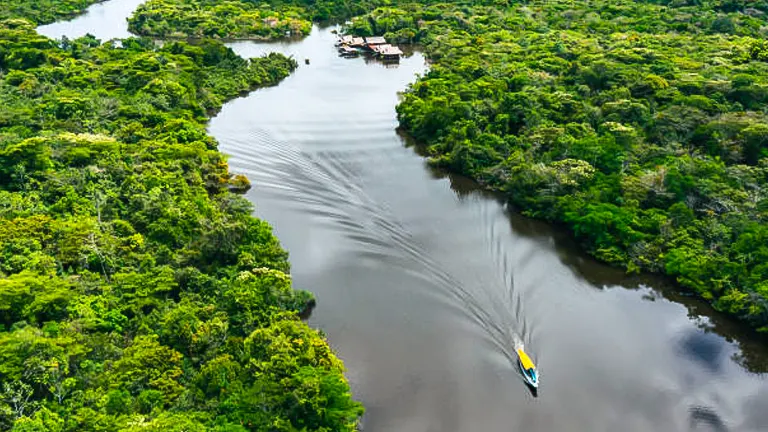
Whether your journey involves trekking through vibrant foliage, observing wildlife up close in their natural settings, or soaking in the serene beauty of untouched nature, this compilation serves as the perfect guide to the world’s most awe-inspiring rainforests. As you set out to explore these wonders, you’re embarking on more than just an adventure; you’re participating in a crucial effort to conserve these essential ecosystems for the benefit of future generations.
List of The 10 Best Rainforests in the World to Explore in 2025
- Amazon Rainforest, South America
- Congo Rainforest, Africa
- Daintree Rainforest, Australia
- Southeast Asian Rainforests
- Madagascar Rainforests
- Monteverde Cloud Forest, Costa Rica
- New Guinea Rainforests
- Western Ghats, India
- Valdivian Temperate Rainforest, Chile and Argentina
- Sinharaja Forest Reserve, Sri Lanka
Why Rainforests?
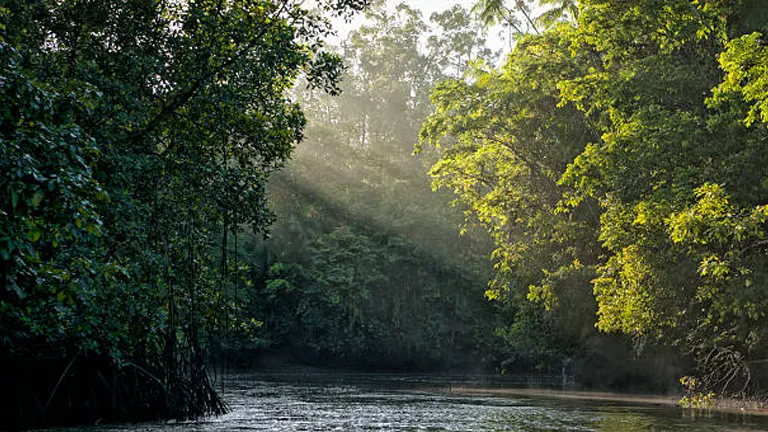
Rainforests are vital to our planet for numerous reasons, acting as the epicenter of biodiversity and an essential piece in the global ecological puzzle. Home to more than half of the world’s plant and animal species, they serve as a living repository of genetic diversity, offering unparalleled opportunities for scientific research and discovery. Beyond their rich biodiversity, rainforests also play a critical role in regulating the Earth’s climate. They act as the lungs of our planet, absorbing vast amounts of carbon dioxide and producing oxygen, thus helping to stabilize the global climate. Additionally, rainforests are crucial for the water cycle, absorbing rainfall and releasing water vapor into the atmosphere, which can affect weather patterns both locally and globally. Their importance extends to cultural and medicinal values as well, providing resources and knowledge that contribute to the well-being of indigenous communities and the world at large. In essence, they are a global asset that sustains environmental balance, supports biodiversity, and impacts the climate and human societies across the globe.
Selection Criteria Detailed
Our selection focuses on four key areas:
- Ecological Significance: The role these rainforests play in their natural and the global environment.
- Accessibility: How travelers can responsibly and safely experience these wonders.
- Conservation Efforts: The ongoing work to protect, research, and sustain these environments.
- Unique Biodiversity: The extraordinary species that call these rainforests home, many of which are found nowhere else on earth.
The 10 Best Rainforests in the World to Explore in 2025
1. Amazon Rainforest, South America
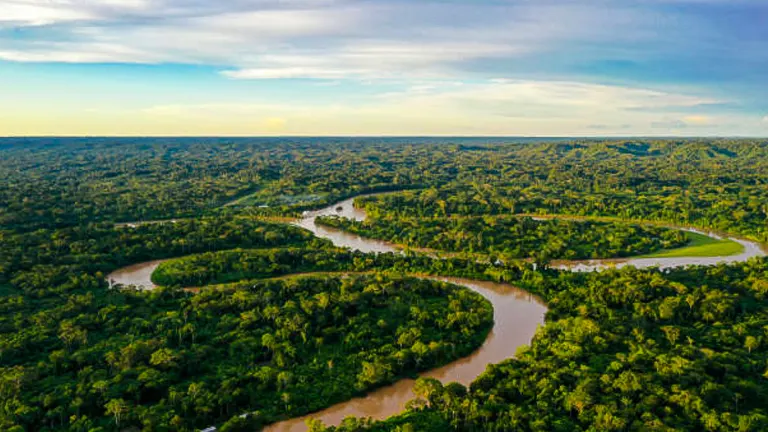
The Amazon Rainforest, sprawling across nine countries, is the heart of our planet’s ecological system. This vast green expanse is critical to the Earth’s health, influencing global climate patterns and housing an unmatched diversity of life. Its rivers and tributaries weave through dense forests, creating a network of life that supports both the terrestrial and aquatic ecosystems unique to this area. As explorers venture into its depths, they encounter a world where the air is alive with the calls of exotic birds, the rustle of ancient trees, and the constant buzz of insects, all part of the delicate balance of the Amazon’s vibrant ecosystem.
Key Information:
- Special Features: The Amazon River, the largest by volume, snakes through the forest, creating a network of waterways that are best explored by boat.
- Size: Approximately 5.5 million square kilometers (2.1 million square miles).
- Accessibility: Key entry points include Manaus in Brazil, Iquitos in Peru, and Leticia in Colombia, with guided tours available for deeper exploration.
- Ecosystem/Biodiversity: Home to over 10 million species of animals, plants, and insects, including the jaguar, pink dolphin, and countless species of birds and fish.
- Conservation Efforts: Various initiatives like the Amazon Fund work to prevent, monitor, and combat deforestation while promoting sustainability.
- Ecological Significance: Plays a crucial role in global oxygen production and carbon dioxide absorption, regulating the Earth’s climate.
2. Congo Rainforest, Africa
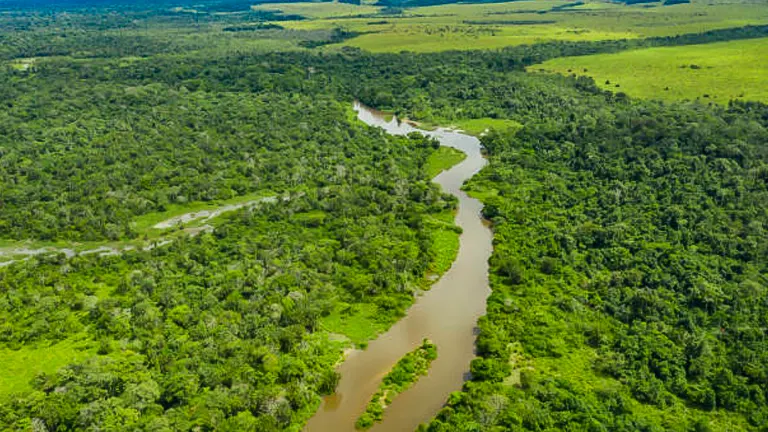
Enveloping six nations, the Congo Basin stands as an ecological powerhouse, a verdant expanse that breathes life into Africa’s heart. It’s a realm where dense forest canopies stretch as far as the eye can see, harboring secrets of the world’s second-largest rainforest. Within this emerald world, the air hums with the vitality of a complex, interdependent web of life. The Congo is home to a staggering array of species, from the elusive forest elephants to the majestic gorillas, thriving under the protection of the forest’s leafy embrace.
Key Information:
- Special Features: The Congo River, a vital waterway supporting the forest’s vast biodiversity.
- Size: Over 3.4 million square kilometers (1.3 million square miles), encompassing a diverse range of habitats.
- Accessibility: Accessible through countries like the Democratic Republic of Congo, with eco-tourism focused on conservation areas like Virunga National Park.
- Ecosystem/Biodiversity: A sanctuary for endangered species such as the mountain gorilla and forest elephant, alongside a rich variety of birds, reptiles, and insects.
- Conservation Efforts: Conservation programs are in place to protect habitats and combat poaching, with international support for ecological research and local community development.
- Ecological Significance: A critical carbon sink, the Congo Rainforest is essential for maintaining regional rainfall patterns and global climate stability.
3. Daintree Rainforest, Australia
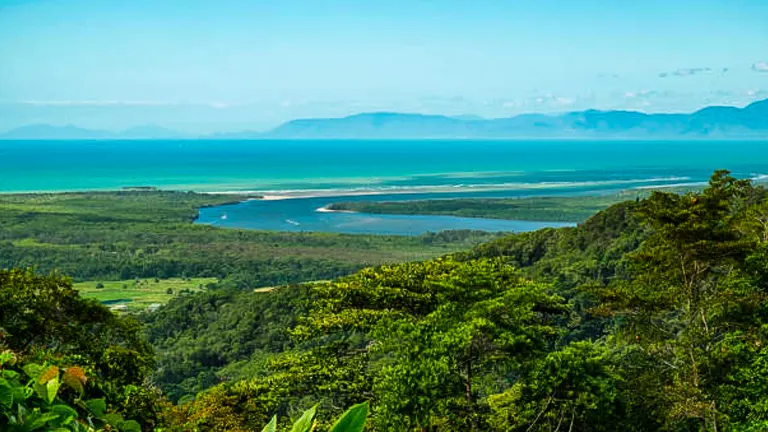
The Daintree Rainforest, a jewel in the crown of Australia’s natural heritage, is a living link to the ancient world. Over 180 million years old, it predates even the dinosaurs, offering a window into the evolution of ecosystems on Earth. Walking through the Daintree is like stepping back in time; every plant, every creature has a story that reaches back centuries. This rainforest is not just an ecological treasure but a vital piece of the Earth’s history, showcasing the resilience and diversity of life in its most primal form. As the mist rises off the moss-covered trees and the sounds of the forest come alive, visitors are enveloped in a world that has remained unchanged for millions of years, a true testament to nature’s majesty.
Key Information:
- Special Features: A unique convergence where the Great Barrier Reef meets ancient woodland, offering diverse terrestrial and marine experiences.
- Size: Covering approximately 1,200 square kilometers (460 square miles) of Northeast Queensland.
- Accessibility: Easily reachable from Cairns, with a range of tours that emphasize low-impact visitation to preserve the forest’s integrity.
- Ecosystem/Biodiversity: Home to ancient plant species and a vast array of wildlife, including the cassowary, one of the world’s largest birds.
- Conservation Efforts: Ongoing conservation and restoration projects aimed at protecting the rainforest from the impacts of climate change and human activity.
- Ecological Significance: Provides critical insights into the evolutionary history of plant and animal species, offering valuable lessons for conservation worldwide.
4. Southeast Asian Rainforests
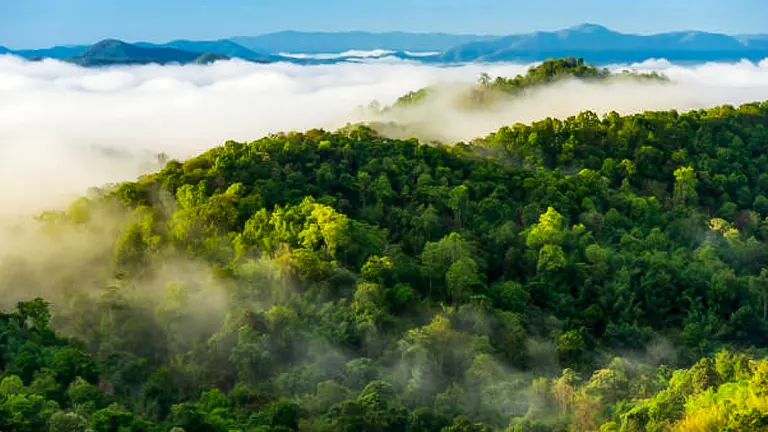
The rainforests of Southeast Asia are among the world’s most biodiverse habitats, spanning across several countries including Indonesia, Malaysia, and Thailand. These lush, tropical paradises are teeming with life, offering a kaleidoscope of flora and fauna that is unparalleled. The dense canopies and warm, moist climate create an ideal environment for thousands of species of plants and animals, many of which are endemic to the region. As travelers weave through the vibrant, green landscapes, they are greeted by the sounds of chirping birds, the sight of unique insects, and the occasional glimpse of shy wildlife hidden in the foliage.
Key Information:
- Special Features: Home to the world’s largest flower, the Rafflesia, and critically endangered species like the orangutan and Sumatran tiger.
- Size: Extends over approximately 1.5 million square kilometers across the islands and mainland of Southeast Asia.
- Accessibility: Key entry points include national parks like Gunung Leuser in Sumatra, Indonesia, and Taman Negara in Peninsular Malaysia, with guided tours and eco-lodges available.
- Ecosystem/Biodiversity: Contains over 20,000 plant species, with significant numbers of mammal, bird, reptile, and fish species, many of which are endemic.
- Conservation Efforts: Conservation activities are focused on protecting habitats from deforestation, illegal wildlife trade, and the impacts of palm oil cultivation.
- Ecological Significance: Critical for maintaining regional climate balance and water cycles, these rainforests play a vital role in carbon storage and biodiversity conservation.
5. Madagascar Rainforests
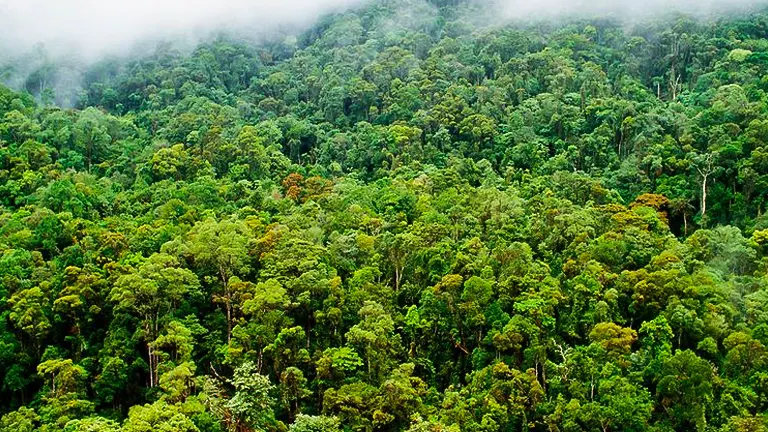
Madagascar’s rainforests, rich in unique biodiversity, form a world apart on this island nation. Isolated from mainland Africa, the island has fostered the evolution of its distinctive wildlife and ecosystems, with the dense forests home to an astonishing array of endemic species. The lush landscapes and unique flora and fauna make Madagascar’s rainforests a must-visit for nature enthusiasts and eco-tourists.
Key Information:
- Special Features: Madagascar is renowned for its lemurs, baobab trees, and unique flora, much of which is endemic to the island.
- Size: Madagascar’s rainforests primarily occupy the eastern part of the island, covering around 60,000 square kilometers (23,000 square miles).
- Accessibility: Accessible through major entry points like the Andasibe-Mantadia National Park and the Ranomafana National Park, both offering guided tours and wildlife viewing opportunities.
- Ecosystem/Biodiversity: The island hosts over 90% endemic species, including more than 100 lemur species, numerous bird species, and a vast array of reptiles and plants.
- Conservation Efforts: Focused on combating deforestation, habitat loss, and promoting sustainable practices to protect the island’s unique biodiversity.
- Ecological Significance: Madagascar’s rainforests are crucial for the conservation of the island’s unique species and serve as key areas for biodiversity research and ecological education.
6. Monteverde Cloud Forest, Costa Rica
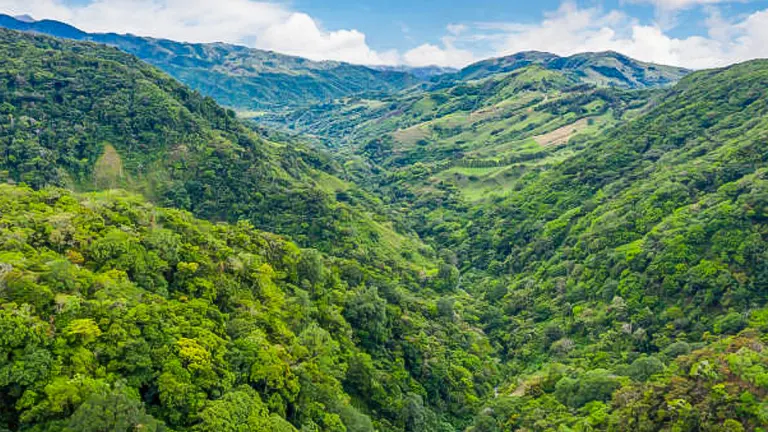
Monteverde Cloud Forest stands as a beacon of biodiversity, enveloped in a perpetual mist that gives this highland rainforest its name. Located in Costa Rica, this ecological wonderland is a haven for nature lovers, offering a unique blend of tropical biodiversity and montane cloud forest conditions. Visitors can wander through paths where the dense fog enhances the mystical feel of the forest, creating an ethereal experience as they encounter a wide variety of flora and fauna, from vibrant orchids to the resplendent quetzal.
Key Information:
- Special Features: Known for its cloud-covered canopy, which is home to the elusive quetzal, hundreds of orchid species, and the fascinating cloud forest ecosystem.
- Size: The Monteverde Cloud Forest Reserve covers approximately 10,500 hectares (26,000 acres), a vast area preserving a rich biodiversity.
- Accessibility: Situated near the town of Santa Elena, it’s accessible by road from Costa Rica’s capital, San José, with guided tours available to explore the forest’s trails and canopy walkways.
- Ecosystem/Biodiversity: Hosts over 2,500 plant species, 100 mammal species, 400 bird species, and 120 reptilian and amphibian species, many of which are found only in this cloud forest environment.
- Conservation Efforts: The reserve is a pioneer in ecotourism and conservation, focusing on education, research, and community involvement to protect its unique ecosystem.
- Ecological Significance: Plays a critical role in water cycle regulation and carbon storage, showcasing the importance of cloud forests in global ecological health.
7. New Guinea Rainforests
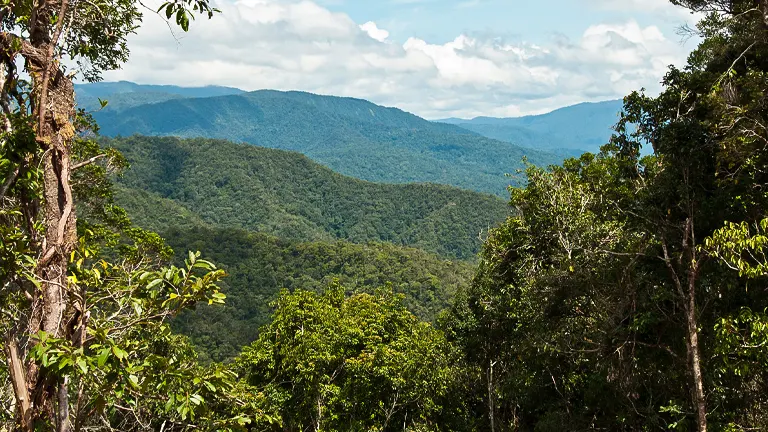
The New Guinea Rainforests, stretching across the second-largest island in the world, represent one of the last true wilderness areas on the planet. This vast, unexplored territory is a hotbed of biodiversity, housing a spectacular array of wildlife, much of which has yet to be studied. The island’s rugged terrain, combined with the dense tropical forests, provides a sanctuary for thousands of unique species. For those adventurous enough to delve into its depths, New Guinea offers an unparalleled opportunity to witness the raw beauty and diversity of life in one of the world’s most untouched environments.
Key Information:
- Special Features: Characterized by its rich cultural heritage, with hundreds of indigenous groups, and an incredible diversity of wildlife, including the bird of paradise.
- Size: The rainforests blanket much of the island, covering an area of approximately 288,000 square kilometers (111,000 square miles).
- Accessibility: While remote, areas like the Baliem Valley offer a gateway for adventurers, with access to guided tours and treks that explore the island’s interior and cultural experiences.
- Ecosystem/Biodiversity: Home to an estimated 8,000 plant species, over 600 bird species, and more than 200 mammal species, showcasing a high level of endemism.
- Conservation Efforts: Conservation initiatives are critical to protecting its vast biodiversity from threats like deforestation and mining, emphasizing the importance of sustainable development and local community engagement.
- Ecological Significance: New Guinea’s rainforests play a vital role in the ecological balance of the region, supporting a complex web of life that contributes to the global biodiversity and climate regulation.
8. Western Ghats, India
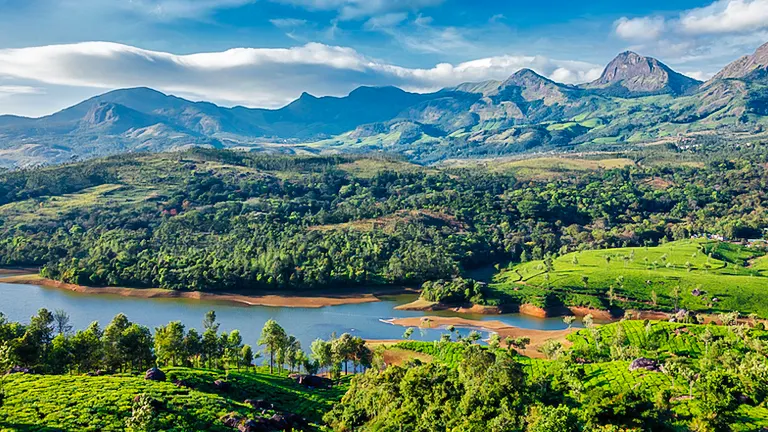
The Western Ghats of India are recognized as one of the world’s eight “hottest hotspots” of biological diversity. Stretching over 1,600 kilometers along the western coast of India, these ancient mountains are home to an array of ecosystems, from tropical rainforests to grasslands. The Western Ghats are not only a refuge for hundreds of endemic species but also play a critical role in the Indian monsoon weather pattern. For travelers, the Ghats offer a stunning display of nature’s splendor, with cascading waterfalls, spice plantations, and an abundance of wildlife.
Key Information:
- Special Features: Houses several UNESCO World Heritage sites, is known for its spectacular waterfalls, like those at Jog Falls, and its significant population of Asian elephants and tigers.
- Size: The area of the Western Ghats is approximately 140,000 square kilometers (54,054 square miles), making it one of the largest biodiversity hotspots in the world.
- Accessibility: Well-connected through major cities like Mumbai, Pune, and Bengaluru, with numerous protected areas like the Periyar National Park and Silent Valley offering organized tours and treks.
- Ecosystem/Biodiversity: Contains over 7,402 species of flowering plants, 1,814 species of non-flowering plants, 139 mammal species, 508 bird species, and more, with high levels of endemism.
- Conservation Efforts: Several conservation programs focus on protecting the Ghats’ unique flora and fauna, addressing threats from deforestation, pollution, and climate change.
- Ecological Significance: Critical for water security in peninsular India, the Ghats influence the monsoon weather patterns and provide significant carbon sequestration benefits.
9. Valdivian Temperate Rainforest, Chile and Argentina
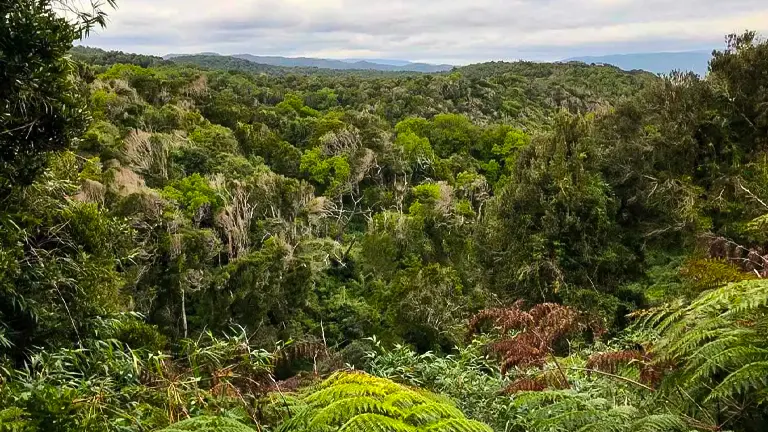
The Valdivian Temperate Rainforest is a unique ecosystem located in southern Chile and parts of Argentina. This rainforest is characterized by its dense, ancient forests, including alerce and olivillo trees, some of which are thousands of years old. The region’s cool, moist climate supports a lush undergrowth of ferns and bamboo, creating a green landscape that seems almost otherworldly. Wildlife enthusiasts will find a rich array of species, from the elusive puma to a myriad of bird species that call this forest home.
Key Information:
- Special Features: Known for its ancient alerce trees, which are among the oldest living trees in the world, and the habitat of unique fauna like the Darwin’s frog and the kodkod, the smallest cat in the Americas.
- Size: Covers an area of approximately 248,100 square kilometers (95,800 square miles), spanning from Chile’s southern regions to the edge of Patagonia in Argentina.
- Accessibility: Accessible via cities like Valdivia and Puerto Montt in Chile, with various national parks such as the Alerce Andino National Park and the Valdivian Coastal Reserve offering guided tours.
- Ecosystem/Biodiversity: The forest is rich in endemic species, with over 150 species of ferns, numerous mosses, and an extensive variety of fauna adapted to its humid environment.
- Conservation Efforts: Efforts are in place to protect the rainforest from logging, fires, and invasive species, with a focus on preserving its unique ecosystems through sustainable tourism and local conservation projects.
- Ecological Significance: Acts as a vital carbon sink and plays a significant role in the hydrological cycle of southern South America, contributing to the region’s biodiversity and ecological health.
10. Sinharaja Forest Reserve, Sri Lanka
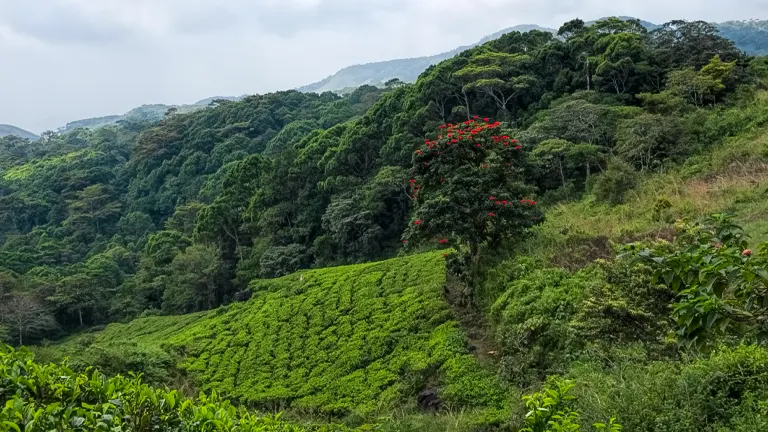
Sinharaja Forest Reserve, Sri Lanka’s last viable area of primary tropical rainforest, is a UNESCO World Heritage Site known for its high biodiversity and unique ecosystem. More than 60% of the trees are endemic and many of them are considered rare. The dense vegetation of Sinharaja is a birdwatcher’s paradise, with mixed-species feeding flocks and many endemic bird species. The forest’s rugged terrain, enveloped in mist and rich in rivers and streams, offers an immersive experience into one of the most pristine environments on the island.
Key Information:
- Special Features: Famed for its bird population, including the mixed-species feeding flocks, and a significant number of endemic species of plants and animals.
- Size: Covers an area of approximately 88.64 square kilometers (34.22 square miles), making it a compact but immensely biodiverse habitat.
- Accessibility: Located in the southwest of Sri Lanka, it’s accessible from major towns like Galle and Matara, with entry points for visitors at Kudawa and Pitadeniya.
- Ecosystem/Biodiversity: Home to over 50% of Sri Lanka’s endemic species of mammals and butterflies, as well as many kinds of insects, reptiles, and rare amphibians.
- Conservation Efforts: Protected as a World Heritage Site, efforts focus on preserving its unique flora and fauna, combating the threats of deforestation and invasive species.
- Ecological Significance: Acts as a crucial biodiversity hotspot in Sri Lanka, contributing significantly to the island’s ecological balance and offering vital ecosystem services.
Conservation and Sustainable Tourism
As we’ve journeyed through the world’s most remarkable rainforests, the importance of conservation and sustainable tourism practices cannot be overstated. These ecosystems are not only treasures of biodiversity but also vital components of the Earth’s climate system and human culture. Sustainable tourism practices ensure that we can enjoy these natural wonders while preserving them for future generations.
Advice and Tips for Visiting Rainforests
Exploring the world’s rainforests is an adventure of a lifetime, offering a chance to witness nature’s wonders up close. However, it’s crucial to approach these journeys with mindfulness and respect for the environments we’re privileged to visit. Here are some essential tips to ensure your rainforest adventure is both enjoyable and sustainable:
- Prepare for the Environment: Rainforests are complex ecosystems with unique climates. Pack lightweight, breathable clothing, waterproof gear for sudden downpours, and sturdy footwear for hiking. Don’t forget eco-friendly insect repellent and sunscreen to protect yourself and the environment.
- Respect Wildlife: Maintain a safe distance from animals and use binoculars for a closer look. Feeding or touching wildlife can disrupt their natural behaviors and diet.
- Stay on Designated Paths: To minimize your impact, stick to marked trails and boardwalks. This protects undergrowth and prevents soil erosion, helping preserve the rainforest floor’s intricate web of life.
- Leave No Trace: Carry out all trash and minimize your use of plastics. Leaving nothing but footprints ensures the preservation of these pristine environments for future visitors.
- Support Eco-friendly Tours: Choose tours and accommodations that prioritize sustainability and conservation. Responsible operators contribute to the protection of natural resources and local communities.
- Learn from Local Guides: Local experts offer invaluable insights into the rainforest’s biodiversity and conservation challenges. Their knowledge enhances your experience and supports the local economy.
- Contribute to Conservation: If possible, support conservation efforts through donations or volunteering. Many rainforest regions have programs in place to protect biodiversity and promote reforestation.
- Cultural Sensitivity: Many rainforests are home to indigenous communities. Respect their land and traditions, and seek permission before visiting sacred sites or taking photographs.
- Be Water Wise: Use water sparingly, especially in remote areas where resources are limited. Avoid polluting streams or rivers with soaps or chemicals.
- Travel with a Purpose: Beyond exploration, consider how your visit can contribute positively to rainforest conservation and local welfare. Educate others about the importance of these ecosystems and advocate for their protection.
Related Post
- Explore the Top 15 Must-See Hiking Trails in Colorado for 2025: Your Ultimate Guide
- Discover the Top 15 World’s Most Spectacular Waterfalls: The Ultimate Traveler’s Bucket List
- Discover the Top 12 Mountain Bike Trails in Michigan for 2025: Ultimate Riders’ Guide
- 11 Best Horseback Riding Locations in the USA for 2025: The Ultimate Guide
- Explore the Top 12 State Parks in Alaska for 2025: Your Expert Guide
- Top 10 Camping Sites in Arizona You Need to Visit in 2025: Your Ultimate Outdoor Guide
Conclusion
As we look forward to exploring the ten best rainforests around the globe in 2025, our journey transcends mere adventure, becoming a profound engagement with the Earth’s most vital lungs. These rainforests, each a unique testament to nature’s splendor and complexity, not only offer us the chance to witness biodiversity at its peak but also remind us of the urgent need for conservation. By choosing to visit these natural wonders, we become ambassadors for their preservation, tasked with the responsibility to protect and respect their fragile ecosystems. Let this bucket list serve not only as a guide to the world’s unparalleled beauty but also as a blueprint for sustainable travel, ensuring these treasures remain vibrant and teeming with life for future generations to marvel at and cherish.
FAQs
- What is the most unexpected item I should pack for a rainforest adventure in 2025?
A reusable water bottle with a built-in filter can be a game-changer. It ensures you have access to safe drinking water without contributing to plastic waste in these pristine environments. - How can I ethically interact with indigenous communities while exploring rainforests?
Always approach interactions with respect and consent. Engage with communities through organized tours that offer fair compensation and representation. Listen and learn without imposing your viewpoints. - What’s the best way to document rainforest wildlife without disturbing them?
Invest in a good zoom lens for your camera or smartphone. This allows you to capture detailed photos from a distance. Also, consider silent modes or devices that minimize noise to avoid startling wildlife. - Are there any specific health preparations recommended before visiting a rainforest in 2025?
Yes, vaccinations for diseases like yellow fever and malaria prophylaxis might be recommended based on your destination. Additionally, staying physically active before your trip can help you endure the demanding hikes often encountered in rainforest exploration. - What unique ecological behaviors or phenomena should I be on the lookout for in a rainforest?
Pay attention to the forest at different times of the day. Early mornings and late afternoons are prime times for wildlife activity. Also, observe the fascinating symbiotic relationships, such as those between certain plant species and their pollinators. - Can participating in a rainforest conservation project enhance my visit?
Absolutely. Participating in tree planting, wildlife monitoring, or educational workshops can provide a deeper understanding of the rainforest’s ecological importance and the efforts to preserve it, enriching your travel experience. - What should I know about rainforest photography etiquette?
Use natural light as much as possible to preserve the authenticity of the moment and avoid using flash, which can disturb animals. Respect the home of wildlife; never manipulate the scene or the animals for a shot. - How can I stay environmentally responsible while exploring remote rainforest areas?
Carry all waste out with you, use biodegradable products, and minimize your water usage. Choose accommodations and tours that practice sustainability, and consider offsetting your travel carbon footprint by contributing to reforestation projects.
Exploring the world’s top rainforests in 2025 offers a unique blend of adventure and conservation. Each destination highlights the Earth’s incredible diversity and the critical role we play in protecting it. As we venture into these natural wonders, let’s do so with appreciation and a commitment to their preservation.
Explore our dedicated section on national forests and state parks to uncover hidden gems and outdoor wonders.

Benjamin Brooks
Forestry AuthorGreetings! I'm Benjamin Brooks, and my journey over the past 15 years has revolved around the fascinating realms of content creation, expertise in snow clearing, and the intricate world of lumberjacking and landscaping. What began as a simple curiosity about the natural world and heavy machinery has evolved into a passionate profession where my love for crafting words intertwines seamlessly with my lumberjacking and garden skills.













Leave your comment